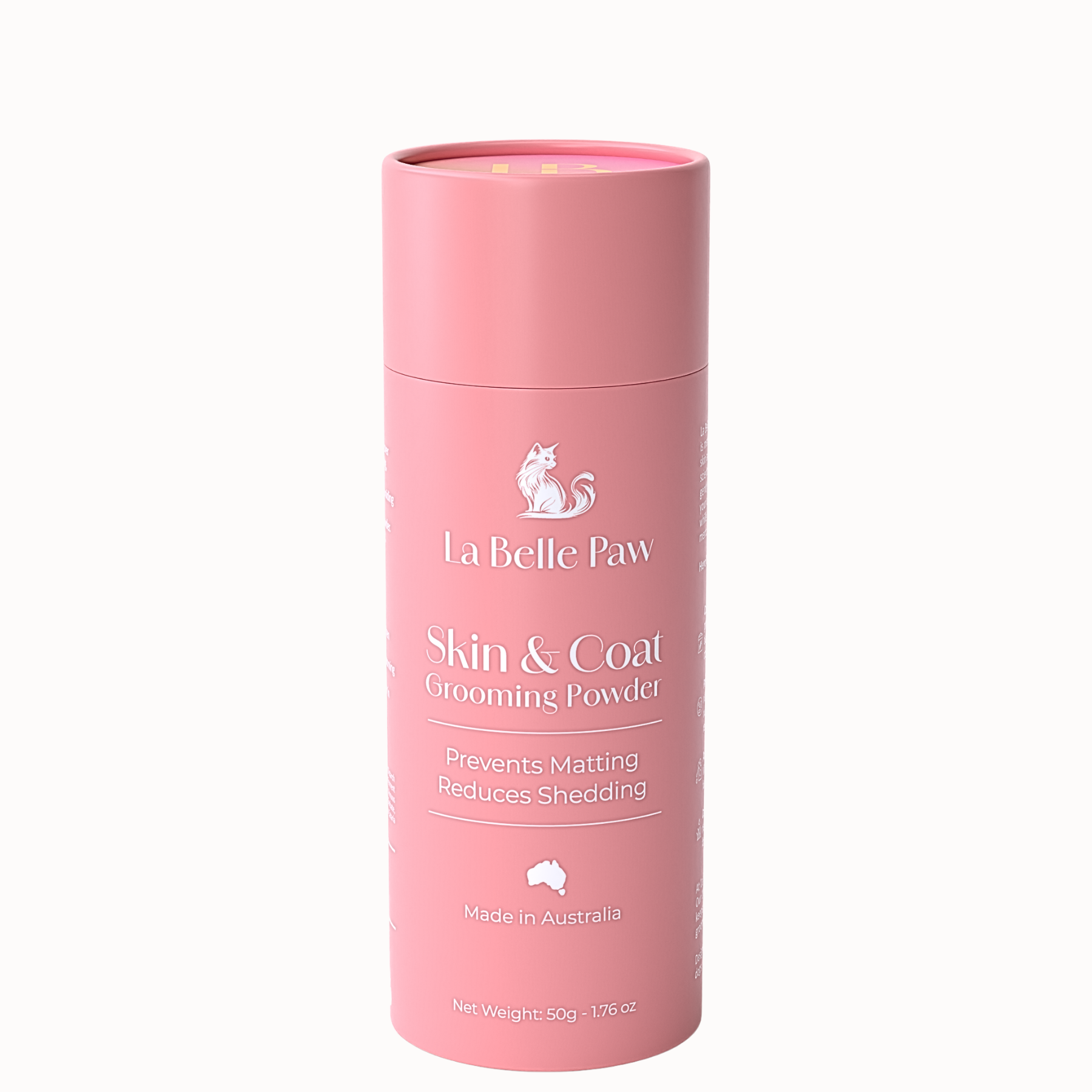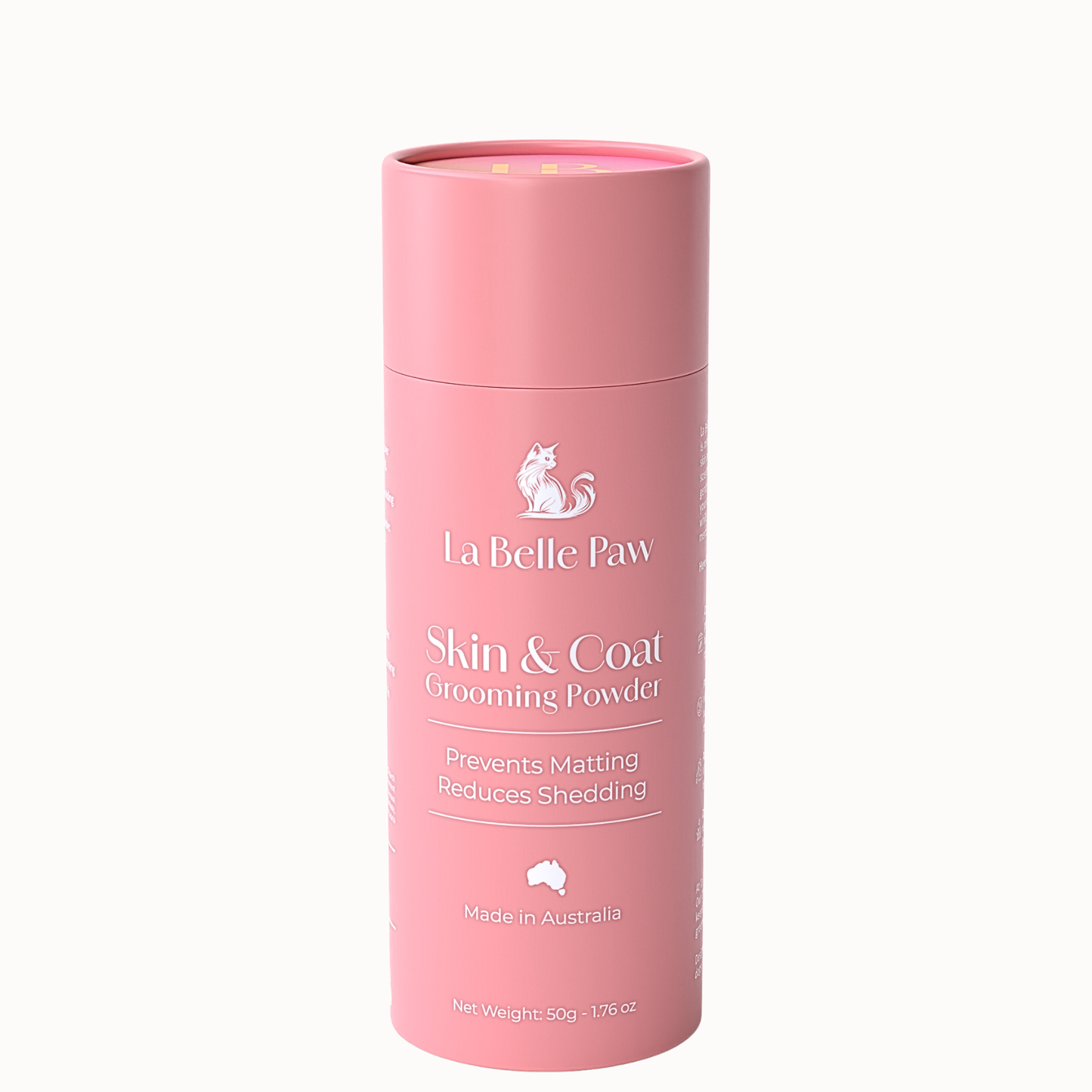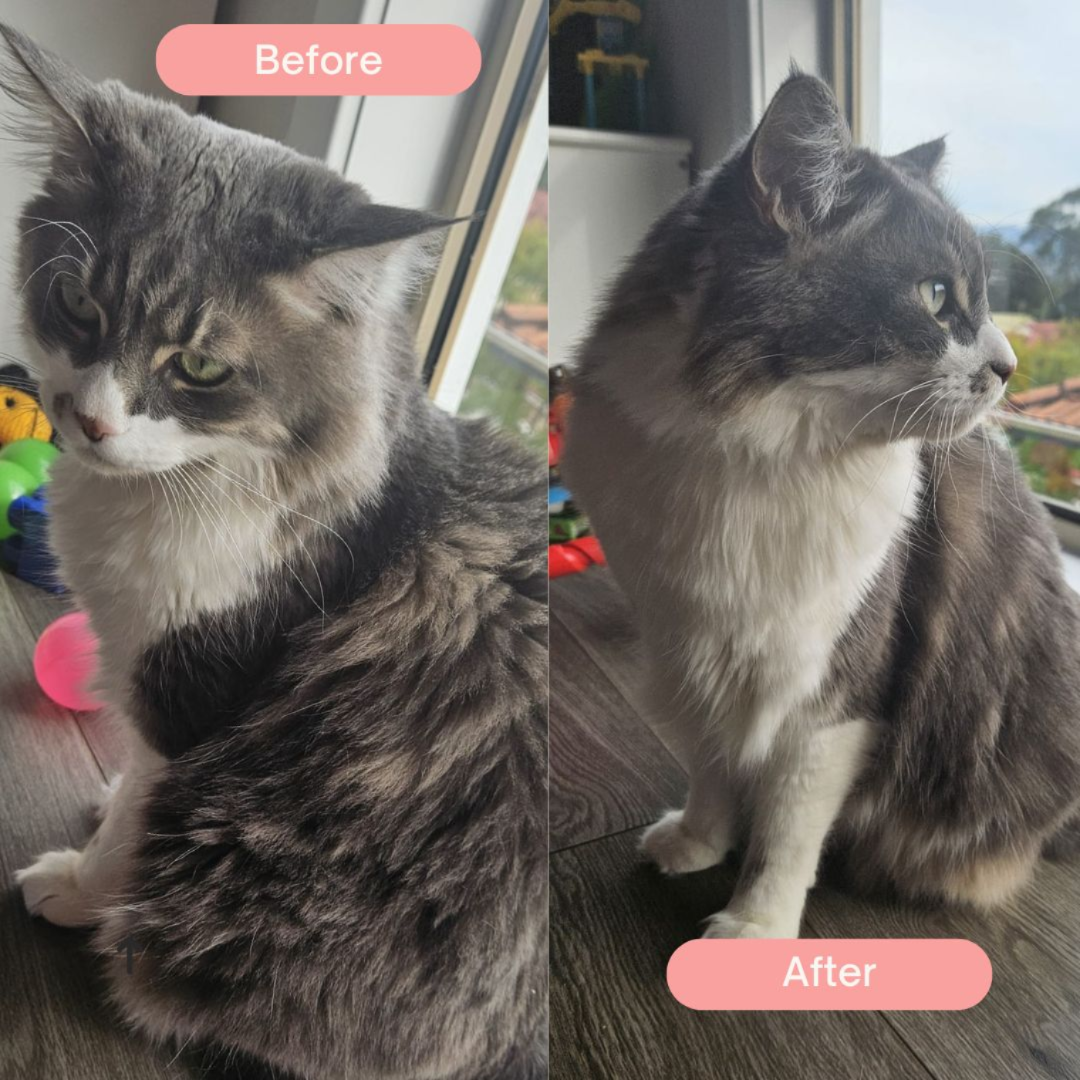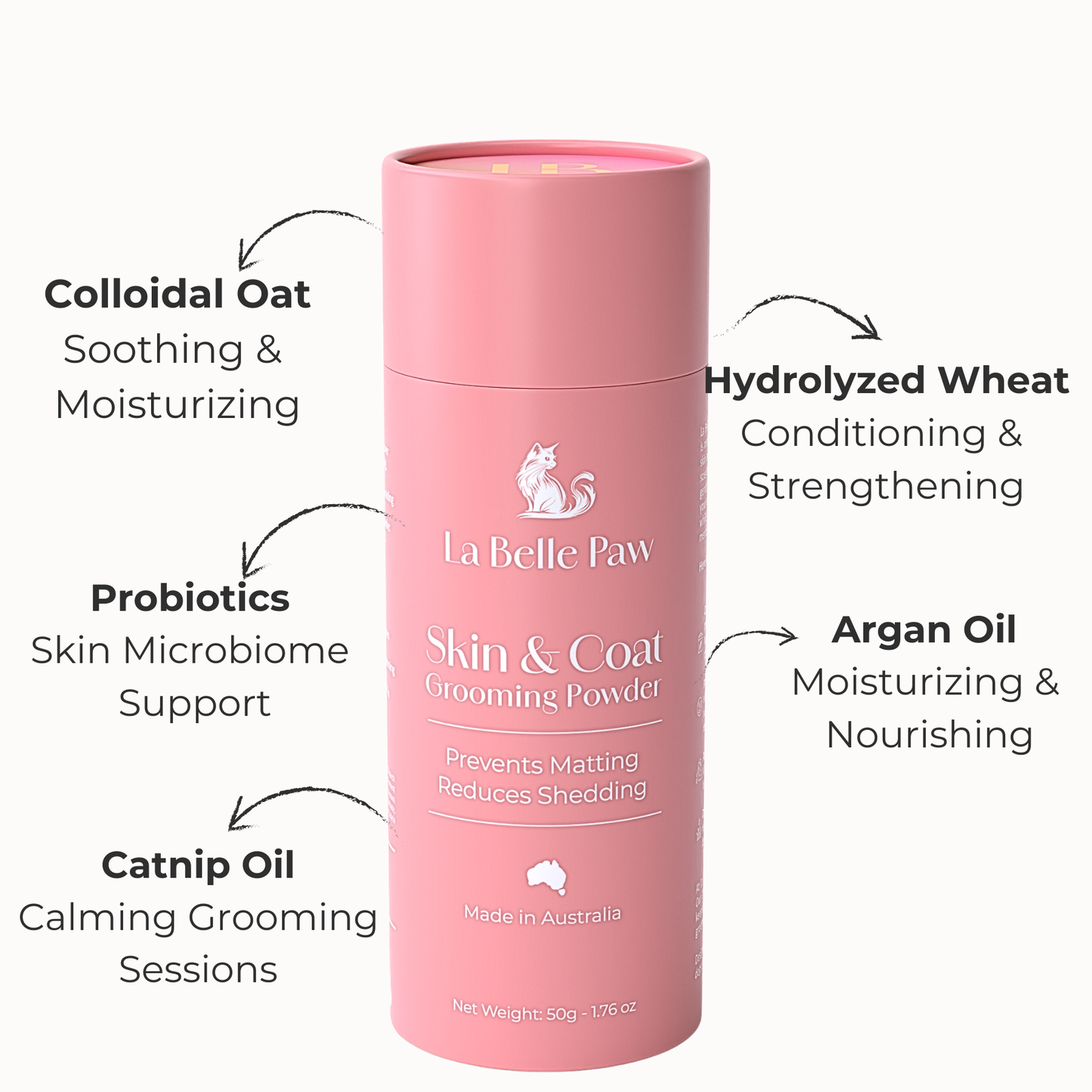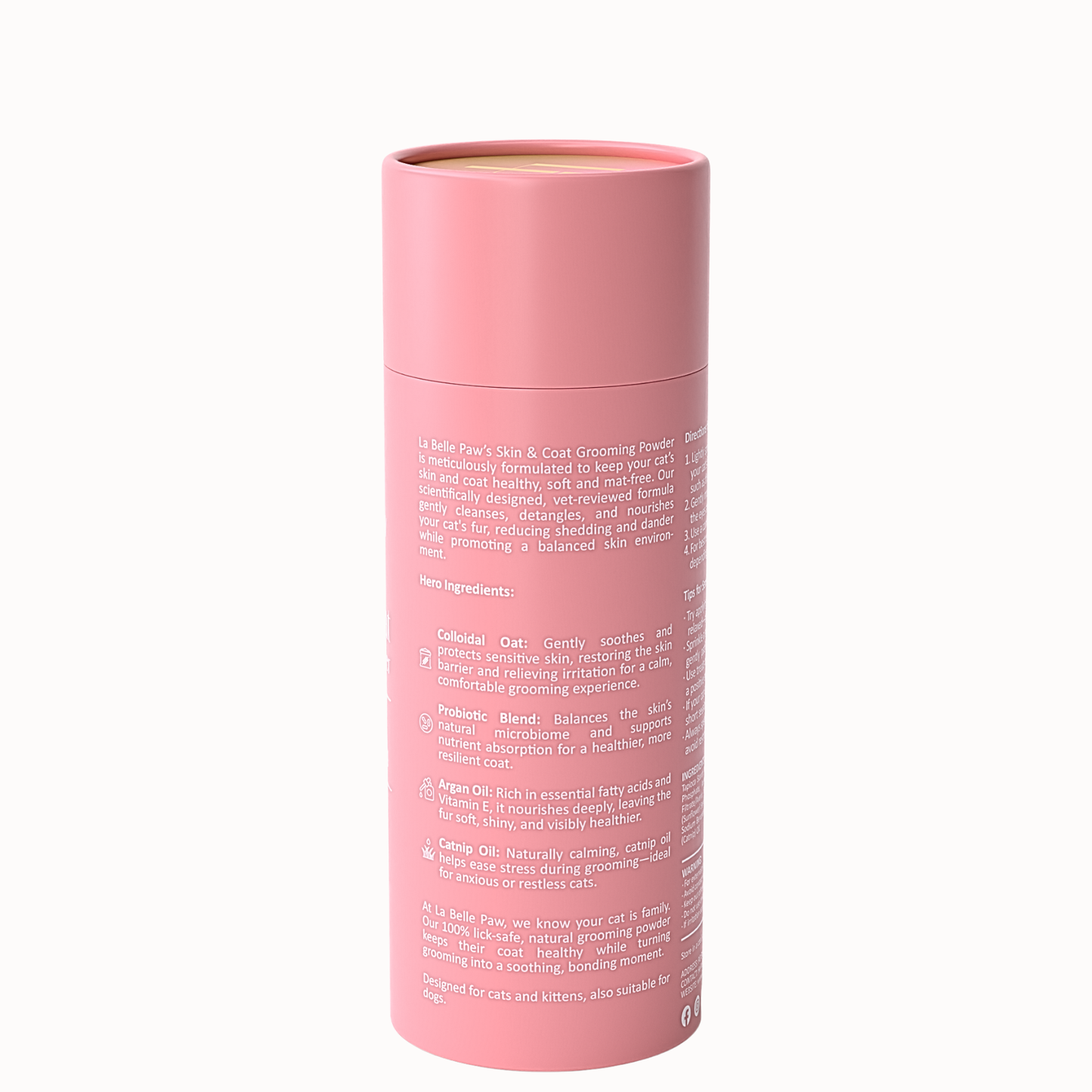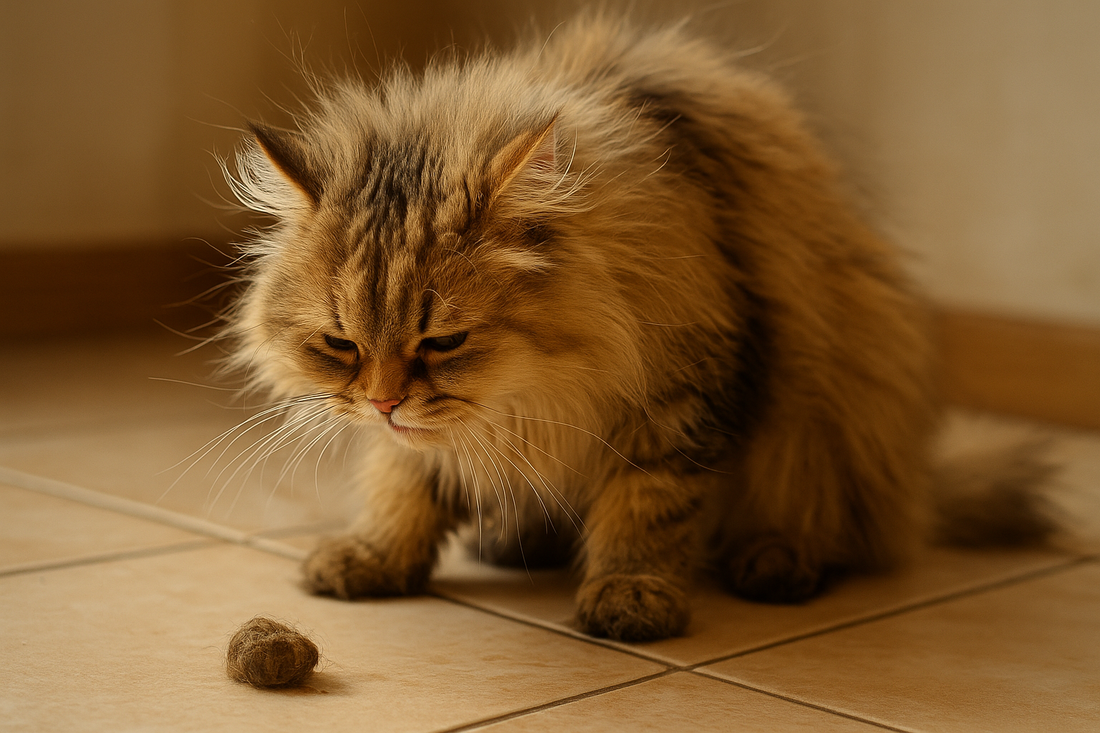
Why Do Cats Throw Up Hairballs?
Share
Understanding the Hairball Phenomenon
Cats are meticulous groomers, often spending a significant portion of their day licking their fur to keep it clean. During this grooming process, they inevitably swallow loose hairs. While most of this hair passes through the digestive system without issue, some can accumulate in the stomach, forming a hairball. When this mass becomes too large or irritating, the cat expels it by vomiting.
What Does a Hairball Look Like?
Contrary to the name, hairballs are typically not spherical. They often appear as elongated, cylindrical masses, resembling a cigar or sausage. Their color usually matches the cat's fur but may be tinged with digestive fluids, giving them a brownish hue.
Why Is My Cat Throwing Up Hairballs?
Several factors contribute to hairball formation:
-
Excessive Grooming: Cats that groom more frequently, whether due to stress, boredom, or skin irritations, ingest more hair, increasing the likelihood of hairball formation.
-
Long-Haired Breeds: Breeds like Persians and Maine Coons have longer fur, making them more susceptible to hairballs.
-
Seasonal Shedding: During periods of heavy shedding, such as spring and fall, cats may ingest more hair than usual.
-
Age: Older cats may groom more meticulously than younger ones, leading to increased hair ingestion.
When Should I Be Concerned?
Occasional hairballs are normal. However, frequent vomiting or unsuccessful attempts to vomit may indicate a more serious issue, such as a gastrointestinal blockage. Signs to watch for include:
-
Persistent vomiting without producing a hairball
-
Loss of appetite
-
Lethargy
-
Constipation or diarrhea
-
Abdominal discomfort
If your cat exhibits any of these symptoms, consult your veterinarian promptly.
Preventing Hairballs
While it's impossible to eliminate hairballs entirely, several strategies can reduce their frequency:
-
Regular Grooming: Brushing your cat daily helps remove loose hairs, reducing the amount ingested during self-grooming.
-
Specialized Diets: Some cat foods are formulated to minimize hairball formation by improving coat health and promoting digestive transit.
-
Hydration: Ensuring your cat has access to fresh water aids in digestion and helps hair pass through the system more easily.
-
Environmental Enrichment: Providing toys and interactive play can reduce stress and boredom, decreasing excessive grooming behaviors.
Introducing Skin & Coat Grooming Powder
For cats that dislike water or traditional grooming methods, Skin & Coat Grooming Powder offers a gentle alternative. This product helps:
-
Reduce Shedding: Keeps your cat's coat cleaner between brushes.
-
Prevent Matting: Makes combing easier and more effective.
-
Soothe the Skin: Contains ingredients that calm irritated skin.
Simply sprinkle the powder onto your cat's coat and brush it through. It's a stress-free way to maintain your cat's hygiene.
Conclusion
Hairballs are a common aspect of feline life, resulting from their natural grooming habits. While occasional hairballs are normal, frequent occurrences may signal underlying issues. Regular grooming, proper diet, and attentive care can significantly reduce hairball formation. Incorporating products like Skin & Coat Grooming Powder can further aid in maintaining a healthy coat and minimizing hair ingestion. Always consult with your veterinarian if you have concerns about your cat's health.
FAQs
Q1: How often should I groom my cat to prevent hairballs?
A1: Short-haired cats benefit from brushing once a week, while long-haired breeds should be brushed daily to minimize hair ingestion.
Q2: Can diet influence hairball formation?
A2: Yes, specialized diets formulated for hairball control can improve coat health and promote digestive transit, reducing hairball occurrences.
Q3: Are hairballs dangerous for cats?
A3: Occasional hairballs are normal, but frequent vomiting or unsuccessful attempts to expel hairballs may indicate a serious issue requiring veterinary attention.
Q4: How does Skin & Coat Grooming Powder help with hairballs?
A4: The powder reduces shedding and prevents matting, decreasing the amount of hair your cat ingests during grooming.
Q5: Should I consult a professional groomer for my cat?
A5: Yes, professional groomers can provide thorough grooming, especially for long-haired breeds, further reducing the risk of hairball formation.


